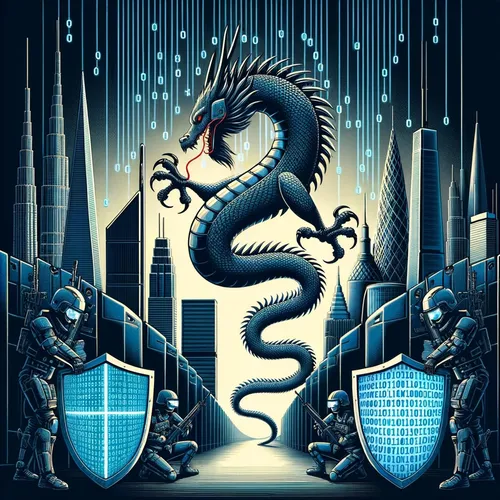Chinese Hackers Wreaking Havoc: The Cyber Siege on Americas Critical Infrastructure Revealed
- Author
- Quiet. Please
- Published
- Tue 19 Aug 2025
- Episode Link
- https://www.spreaker.com/episode/chinese-hackers-wreaking-havoc-the-cyber-siege-on-americas-critical-infrastructure-revealed--67443533
This is your Dragon's Code: America Under Cyber Siege podcast.
Listeners, Ting here, dropping right into the heart of America's cyber-fueled headache: the past few days have been like binge-watching “Dragon’s Code: America Under Cyber Siege”—only the hacking is real, the popcorn is stale, and we’re the ones living out the plot. If you blinked last week, let me get you up to speed, because Chinese state-sponsored cyber operations kicked things up several notches, targeting not just civilian systems but American critical infrastructure from coast to coast.
Let’s start with the headliner: a sprawling campaign leveraging zero-day vulnerabilities in Microsoft SharePoint servers. According to FireCompass and TechRadar, Chinese actors—particularly the group tracked as UAT-7237—ditched their usual spray-and-pray for surgical strikes using advanced deserialization attacks and path traversal techniques. They exploited the critical CVEs 2025-53770 and 2025-53771, slipping in malicious ASPX files and exfiltrating cryptographic secrets that unlocked persistent, stealthy access across financial, healthcare, and government systems. Inclusion of stolen machine keys let these hackers craft authentication tokens to blend in for months. Imagine your digital twin is running around the Pentagon and nobody knows until the server clocks out for an “unexpected outage”[5][9].
Attack methodologies? It’s like a cyber buffet. UAT-7237 went full “living off the land,” blending custom SoundBill loaders with old-school Cobalt Strike beacons and open-source web shells. Their RDP and SoftEther VPN abuse let them tiptoe around network defenses, avoiding the noise of classic malware and phishing. Privilege escalation via delegated Managed Service Account manipulation shows these are not script kiddies but engineers who probably argue about Kerberos tickets at lunch. This blend of stealth and persistence meant not just data theft; these guys set up backdoors that could be triggered later for ransomware or sabotage[5][9].
Attribution’s become a game of “find the fingerprints in the soup.” Cisco Talos researchers matched toolkits and tactics to Volt Typhoon and Flax Typhoon—both well-known Chinese state actors. While there’s always deniability, the infrastructure overlap, language cues, and code artifacts leave little mystery except maybe what snacks they eat during an attack sprint. U.S. government briefings have echoed the same—no smoking gun, but the smoke detectors are blaring[9].
The impact? Healthcare lost millions of patient records; financial services faced inside-out credential theft; federal networks are still counting exposed Social Security numbers and confidential client relationships. The old perimeter model didn’t even slow attackers down. The MITRE ATT&CK mapping reads like a cyber horror story: spearphishing attachments, PowerShell weaponization, registry run keys, plus blatant collection, exfiltration, and then, of course, a little encryption for dramatic effect[3][5].
Defensive measures flew in fast: emergency SharePoint patches, machine key rotations before and after patching, all-hands AMSI integration, and wide deployment of full-spectrum EDR. Some IT teams went so far as disconnecting internet-facing servers—a digital retreat worthy of Sun Tzu. Experts like David Reber Jr of Nvidia publicly warn against introducing kill switches or backdoors, arguing it’d be a “gift to hackers and hostile actors”—not that anyone’s taking delivery on that just yet[1].
Lessons learned? We need better network segmentation, aggressive vulnerability management, and, above all, readiness for multi-vector, persistent attacks. Nation-state squads are deploying AI-enhanced social engineering now, so people, if your hair still isn’t on fire, check for wood in your skull. CISO guidance is clear: treat credentials and keys as radioactive and respond to each new breach as if it’s round one...
